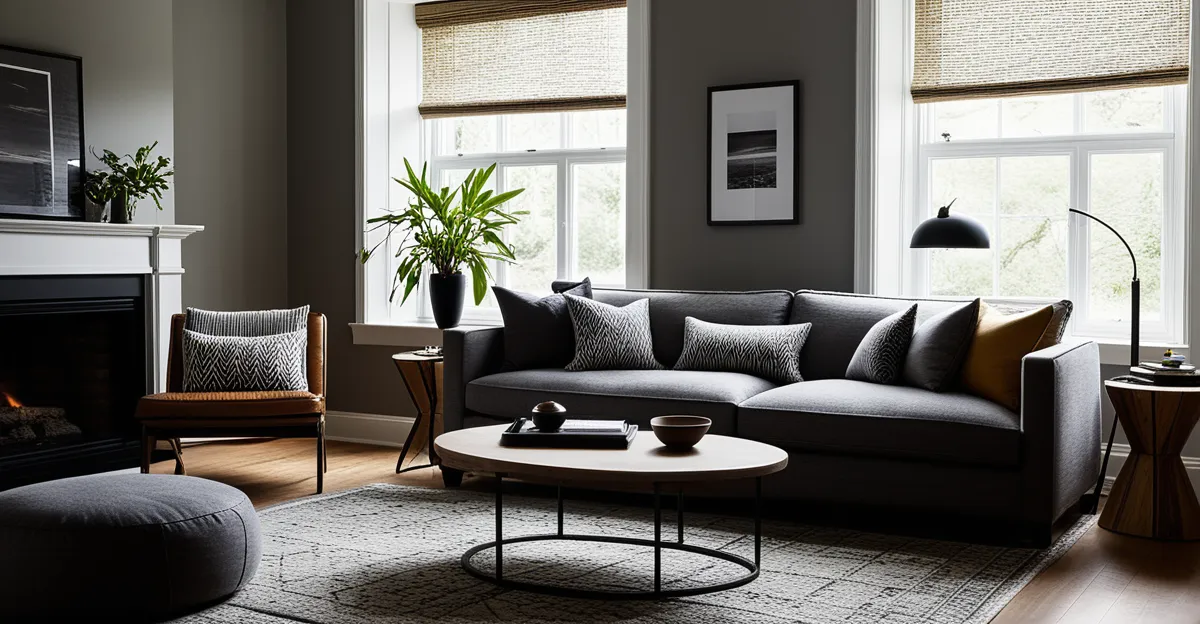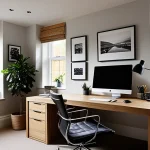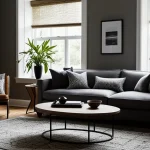Practical Steps to Redesign Your Living Room for Relaxation
Transforming your living room into a retreat begins with a thoughtful assessment of the existing space. Begin by identifying stress factors—cluttered surfaces, awkward layouts, or harsh lighting—that may disrupt tranquility. Paying close attention to these elements allows you to pinpoint what truly needs change to nurture a peaceful home design.
Next, setting clear intentions is essential for a successful living room transformation. Define what relaxation means to you—is it a cozy nook for reading, a spacious area for meditation, or a social yet calming environment? Solidifying these goals guides your choices and keeps the redesign focused on fostering a calming atmosphere that suits your lifestyle.
Topic to read : How can you incorporate smart technology in UK living spaces?
Simple decluttering and organization techniques effectively reduce visual and mental noise. Start by removing unnecessary items, then group essentials neatly using baskets, shelves, or decorative boxes. This process not only frees up space but also enhances the relaxing living room ideas by creating a clean, orderly environment conducive to unwinding.
By tackling these practical steps systematically, your living room redesign will cultivate a genuine sense of peace and comfort, laying the foundation for the next phases of your peaceful home design journey.
This might interest you : How can you design a home office that boosts productivity in a UK setting?
Choosing Soothing Color Schemes and Materials
Colors play a crucial role in establishing a peaceful home design. To achieve the best living room colors for relaxation, opt for calming color palettes featuring soft blues, muted greens, gentle grays, and warm neutrals. These hues are scientifically proven to lower stress levels and promote a restful atmosphere, aligning perfectly with your goals for a soothing living room transformation.
Incorporating natural materials and textures further enhances this effect. Wood, linen, cotton, and stone introduce organic warmth and tactile comfort that visually and physically calm the space. For example, a wool rug or a linen throw can subtly boost the feeling of serenity while adding depth to your relaxing living room ideas.
Balancing tones is key to maintaining visual harmony. Use lighter shades on walls or larger furniture pieces, paired with richer, textured accents through cushions or decorative pieces. This balance prevents monotony and fosters a layered yet cohesive environment, reinforcing your intent for a calming atmosphere that supports relaxation and well-being.
Furniture Selection and Layout for Comfort
Choosing the right living room furniture layout is central to creating a space that encourages relaxation and eases stress. Begin by selecting comfortable seating options that support ergonomic design principles. Chairs and sofas with adequate lumbar support and cushioning reduce physical strain, enabling you to truly unwind. Look for pieces that accommodate your posture and offer softness without sacrificing support.
Arranging furniture for optimal flow and relaxation means creating a layout that facilitates easy movement and conversation, while maintaining a sense of openness. Avoid overcrowding by spacing pieces thoughtfully; this reduces visual clutter and helps maintain the serene atmosphere vital to a peaceful home design. Think about arranging seating to face natural focal points, such as a window or a fireplace, which can enhance calm.
Mixing seating options increases comfort and flexibility. Include a combination of sofas, armchairs, and ottomans to cater to various relaxation preferences—whether lounging, reading, or socializing. For instance, a plush armchair with a footrest complements a spacious sofa and allows different family members or guests to find their ideal spot. Such diversity in furniture supports your living room transformation by making the space adaptable and welcoming.
Enhancing Ambiance with Lighting and Scents
Creating a truly relaxing living room transformation depends heavily on living room lighting ideas that optimize both function and mood. To establish a calming atmosphere, consider layering lighting by combining ambient, task, and accent lights. Ambient lighting provides general illumination, often through overhead fixtures or recessed lights. To soften the environment, complement this with table lamps or floor lamps set with warm bulbs—these add a gentle glow that reduces eye strain and promotes relaxation.
Natural light is a vital component of a peaceful home design, as it connects the interior space with the outdoors, improving mood and well-being. Maximize sunlight by using sheer curtains or adjustable blinds, allowing control over brightness without harsh glare. In the evening, replace harsh overhead lights with dimmable lamps to transition seamlessly from day to night.
Incorporating calming scents significantly enhances the living room’s soothing qualities. Aromatherapy utilizes candles, essential oil diffusers, or incense with scents such as lavender, chamomile, or sandalwood—each known for their stress-relieving and sleep-promoting properties. To implement this effectively, place diffusers in central locations but away from direct airflow to disperse fragrance evenly without being overwhelming.
An effective approach to ambiance combines various lighting sources with scent choices tailored to personal preference. For example:
- Use soft amber-hued LED bulbs in lamps around seating areas to encourage unwinding.
- Place a lavender-scented diffuser near your favorite armchair to reinforce relaxation during reading or meditation.
- Light a soy candle with sandalwood notes during evening gatherings to create a warm, inviting environment.
By thoughtfully layering ambient lighting and integrating calming scents, your living room transformation embraces multiple senses, creating an environment where comfort and tranquility deeply resonate. This multisensory method is key to achieving a living room that not only looks peaceful but feels refreshingly serene.
Adding Personal Touches for a Calming Space
Adding personal decor elements is essential to create a living room that feels uniquely yours while enhancing the overall sense of tranquility. Incorporating meaningful artwork can serve as a focal point that inspires relaxation and mindfulness. Choose pieces that evoke positive emotions or memories, such as calming landscapes or abstract designs in soothing tones. These art selections contribute to a peaceful home design by aligning visual impact with your relaxation goals.
Selecting cozy throws, pillows, and rugs further elevates comfort and supports your living room transformation. Soft textiles in natural fibers like cotton or wool enhance tactile pleasure, encouraging you to unwind physically. Layering these textiles in complementary colors and textures can also add depth and warmth without overwhelming the space, making your relaxing living room ideas tangible through touch and sight.
Incorporating plants and greenery introduces a natural element that profoundly affects ambiance and mood. Houseplants improve air quality and offer a calming visual contrast with their organic shapes and fresh hues. Strategically placing plants around seating areas or near windows not only beautifies your living room furniture layout but also promotes a sense of connection with nature—a subtle yet powerful facet of peaceful home design.
Ultimately, these personal touches harmonize with your existing design choices to craft a soothing environment. By thoughtfully blending art, soft textiles, and greenery, your living room transformation becomes a reflection of both style and serenity, uniquely tailored to promote relaxation every day.







